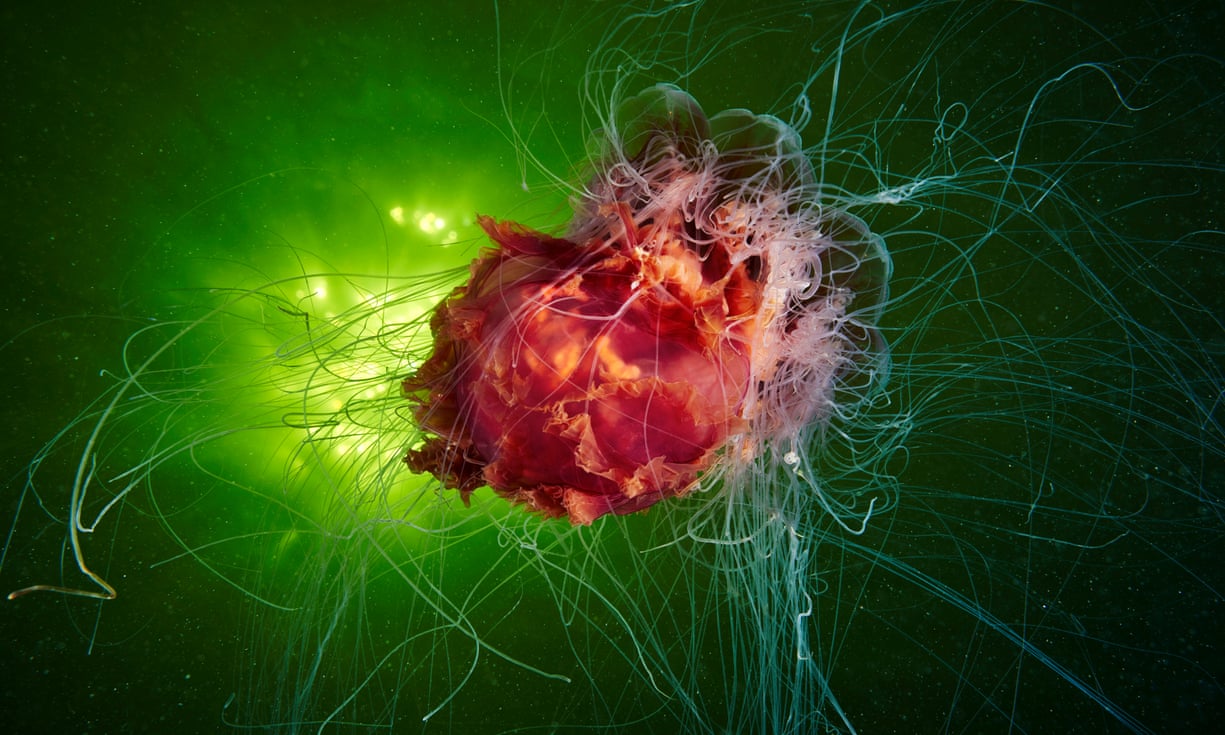http://www.theguardian.com/environment/2015/dec/29/jellyfish-flourish-but-wasps-wobble-in-year-of-climate-confusion

Some thoughts on jellyfish:
Over the break I was stung on the back of the legs. Either by a jelly or by some anenomes that I brushed up against under a dock.
Please forgive me for rubbing my jelly-tropical-vacation in your faces and all over this blog. I promise you there is a relevance to class.
It burned and stang, and I couldn't quite believe it was happening. After looking on my phone and with my sister's help, I diagnosed the hives as form of fibreglass rash.... That was until a week ago, back in montreal, in the cold, and white, they returned. The itchy tentacle pattern is back on my legs. I am one with the jelly. I am part jelly.
According to the news, climate change means that it's been a good year for jellyfish. A Guardian heading from August 21st 2015 urges us to consider "Like a karmic device come to punish our planetary transgressions, jellyfish thrive on the environmental chaos humans create. Is the age of the jellyfish upon us?"
As it turns out this kind of delayed sensitivity, or delayed reaction which I'm experiencing is common. But the effect of this venom on humans is not very well understood. WebMD says this kind of thing can last for few months. And strike again, repeatedly. In fact it was this this line of inquiry about how long will I be itchy, how to stop itchy, why me, and what is the effect of sea anenome venom, that I learnt about the history of anaphylaxis. It was discovered by Charles Richet and Paul Portier who had been experimenting with the toxicity of sea anenome venom on dogs. http://www.ncbi.nlm.nih.gov/pubmed/14989211
Hist Sci Med. 2003 Oct-Dec;37(4):463-9.
[The discovery of anaphylaxis, a brief but triumphant encounter of two physiologists (1902)].
[Article in French]
Abstract
All this is to say is that jellyfish may be a good starting point for me to consider the anthropocene and affect. What can we learn from jellyfish? How can we conceive of a jellybody thinking? How is it that the jellyfish has left a mark on my legs? How is it that my body still reacts as if the jellyfish is still there? What is a supernormal stimulus? Supernomal excess?
I love this, Ellie! One with jelly indeed!
ReplyDeleteI shall call you 'Jellie'. Somewhere out there in the ocean, the jelly that stung you is considered how part of itself was extended to you, and how it is now part human.
ReplyDeleteThis is a total tangent but this made me think of contemporary celebrity couples and how they get grouped under the one name - such as Angelina Jolie and Brad Pitt as 'Brangelina'. Perhaps what has been considered a superficial 'meme' such as this is actually good way of considering a pair of people (or animals, objects, natures, or any combination of) and their collective bodily thinking.